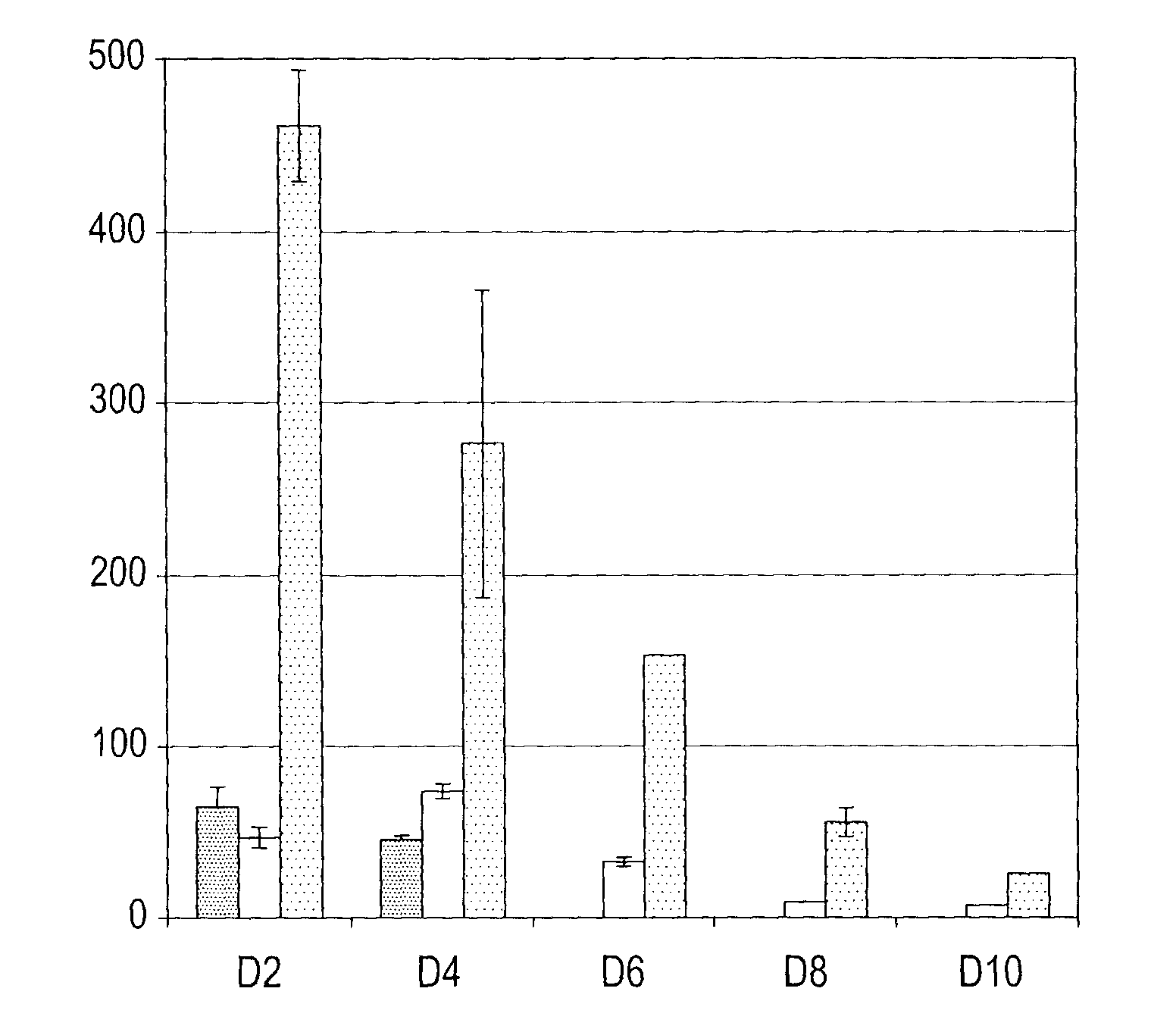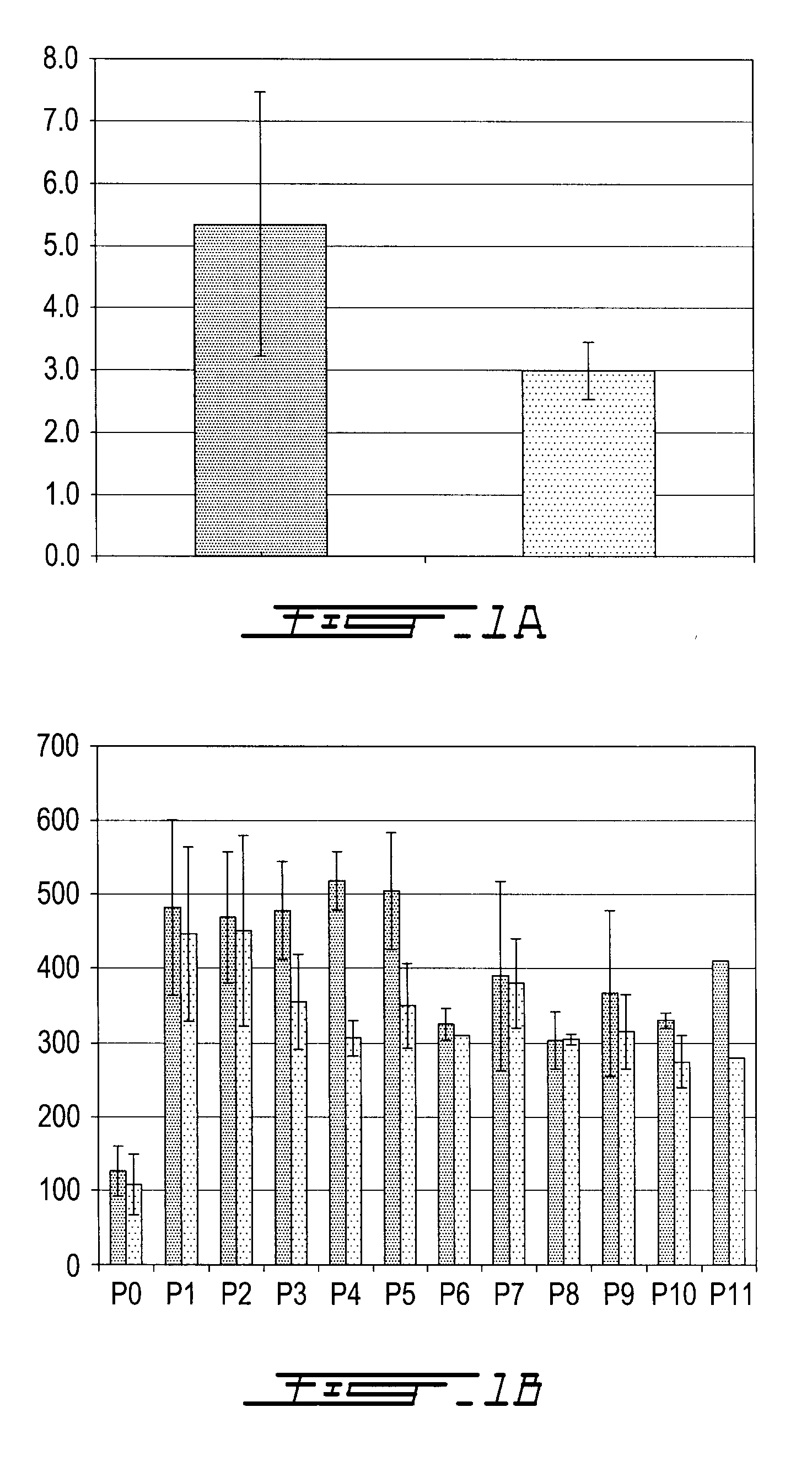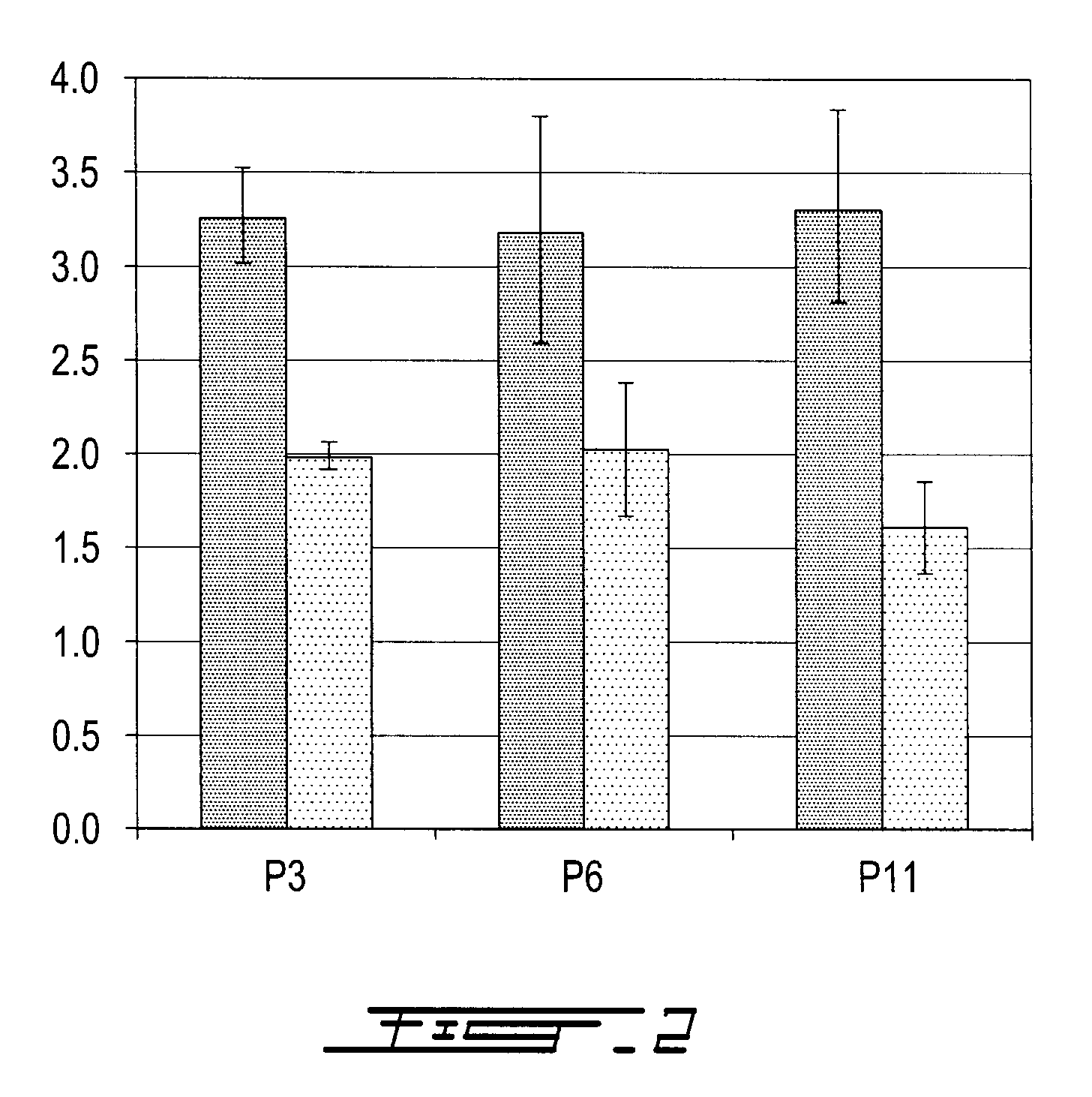Reconstructed living adipose tissue
- Summary
- Abstract
- Description
- Claims
- Application Information
AI Technical Summary
Benefits of technology
Problems solved by technology
Method used
Image
Examples
example i
Preparation of Reconstructed Adipose and Conjunctive Tissues
[0053]Isolation and culture of stromal cells from human adipose tissue. Cells were extracted from adipose tissues of healthy subjects undergoing cosmetic surgery procedures following guidelines from Laval University Ethic Board. Tissues were harvested either as excised fat from lipectomy biopsies (LP, n=3) or as lipoaspirated fat (LA, n=3) with a 4 mm cannula. In one case, LP and LA cells were obtained from the same patient (age 33). The mean age of donors was respectively 37.7±9.9 years for LP and 39.0±5.6 years (LA) The mean body-mass index (BMI) of donors was 23.5±0.4 for LP and 23.6±2.9 (LA). The harvested tissues allowed to process approximately 4 times 60 grams of fat according to standard stromal cell extraction protocols [Hauner H et al, J Clin Invest 1989; 89(5):1663-70., Zuk et al. Tissue Eng 2001; 7(2):211-28]. Adipose tissues were digested with 0.075% collagenase (type 1A, Sigma) in Krebs-Ringer Buffer for 60 mi...
example ii
Characterization of the Reconstructed Adipose Tissue Produced in Example I
[0063]First, two modes of tissue harvesting were compared to determine if lipoaspiration procedures could be detrimental to the viability of stromal cells or affect their phenotype. Results are shown in FIG. 1. Not only the yields obtained at the time of extraction were higher for LA cells (FIG. 1A), but the cells also proliferated slightly better in culture than LP cells (FIG. 1B). This implies that a mean of 500 000 stromal cells can be extracted per g of lipoaspirate, and considering that 400 g of tissue can easily be obtained and processed, 200 millions cells would be available for culturing, from which 2% could have stem cell characteristics [Strem B M et al. Trends Biotechnol 2005; 23(2):64-6]. To our surprise, and as show in FIG. 2, LA-derived cells also featured a higher adipogenic potential in vitro than the lipectomy-derived LP cells from excised fat. Moreover, the results indicate that extensive in ...
example iii
Production and Characterization of Vascularized Reconstructed Adipose Tissue
[0074]Reconstructed adipose tissue and reconstructed conjunctive tissue were produced as outlined in Example I. After 20 days of culture, dermal endothelial cells have been added to three superimposed sheets and further cultured for 5 more days before, as outlined in Example I, superimposing the adipose sheets to form the vascularized reconstructed adipose / conjunctive tissue. Control reconstructed adipose tissue and reconstructed conjunctive tissue not seeded with endothelial cells have also been produced.
[0075]Results are shown in FIG. 11. PECAM positive tubules have been observed in vascularized reconstructed adipose tissue and reconstructed conjunctive tissue only and not in control reconstructed adipose tissue or control reconstructed conjunctive tissue. In addition, among the tubular structures observed in those tissues, vascularized reconstructed adipose tissue induced with an adipogenic cocktail have ...
PUM
| Property | Measurement | Unit |
|---|---|---|
| Fraction | aaaaa | aaaaa |
| Fraction | aaaaa | aaaaa |
| Concentration | aaaaa | aaaaa |
Abstract
Description
Claims
Application Information
 Login to View More
Login to View More - R&D
- Intellectual Property
- Life Sciences
- Materials
- Tech Scout
- Unparalleled Data Quality
- Higher Quality Content
- 60% Fewer Hallucinations
Browse by: Latest US Patents, China's latest patents, Technical Efficacy Thesaurus, Application Domain, Technology Topic, Popular Technical Reports.
© 2025 PatSnap. All rights reserved.Legal|Privacy policy|Modern Slavery Act Transparency Statement|Sitemap|About US| Contact US: help@patsnap.com



